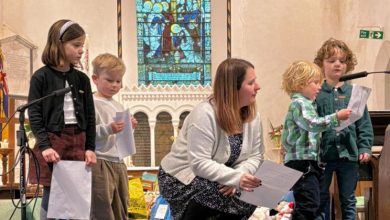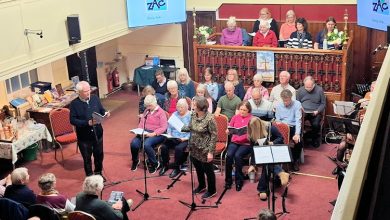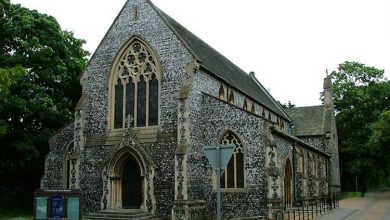Norfolk church leads nature recovery project

The new short film released showcases the grassroots nature recovery movement in the Norfolk town of Harleston, with the local church playing a central role. Led by Rev Nigel Tufnell, Ian Carstairs, and Trevor Graham, the initiative aims to encourage nature recovery in and around Harleston. Local primary school students created a display of 450 butterflies, and the town was adorned with colorful bunting to draw attention and support. The launch event featured speakers from various councils and conservation organizations, inspiring individuals and community groups to take action.
The success of the nature recovery effort in Harleston has led to the development of the “Harleston Model,” which focuses on permissive rather than directive approaches to promote local autonomy in nature recovery efforts. The initiative has changed the community’s attitude towards nature recovery, with more people now accepting the importance of helping wildlife thrive in gardens and public spaces. The model has been officially adopted by the district council and is gaining momentum beyond Harleston, inspiring similar initiatives in other areas.
St John’s church has remained a focal point for events and displays related to nature recovery, with regular articles and changes made to churchyards to support wildlife and biodiversity. The partnership with council allies has further strengthened the community’s resolve to support nature recovery efforts. The Nature Recovery – We Can! initiative demonstrates the power of community action and collaboration in driving significant environmental change. By fostering a culture of conservation, they hope to inspire others to take similar steps in their own communities to make a difference for the planet.
The inspiring story of the nature recovery movement in Harleston highlights the impact of local efforts in addressing global biodiversity loss. The initiative has gained recognition beyond the town, with the “Harleston Model” being adopted by other councils in the region. By promoting community engagement and collaboration, the project serves as a testament to the power of grassroots action in creating positive environmental change. Through initiatives like Nature Recovery – We Can!, communities can make a real difference in conserving wildlife and promoting biodiversity, demonstrating that small actions can have a big impact on the planet.







Your house is valueble for me. Thanks!…
Well I really enjoyed studying it. This information provided by you is very effective for good planning.
Pretty nice post. I just stumbled upon your blog and wanted to say that I have really enjoyed browsing your blog posts. After all I’ll be subscribing to your rss feed and I hope you write again soon!
I am always browsing online for articles that can aid me. Thank you!
This is the right blog for anyone who wants to find out about this topic. You realize so much its almost hard to argue with you (not that I actually would want…HaHa). You definitely put a new spin on a topic thats been written about for years. Great stuff, just great!
Thanks for the good writeup. It if truth be told was a enjoyment account it. Glance complex to far brought agreeable from you! However, how can we keep up a correspondence?
Thanks a bunch for sharing this with all of us you really know what you’re talking about! Bookmarked. Please also visit my site =). We could have a link exchange agreement between us!
Howdy would you mind sharing which blog platform you’re working with? I’m going to start my own blog in the near future but I’m having a difficult time making a decision between BlogEngine/Wordpress/B2evolution and Drupal. The reason I ask is because your design and style seems different then most blogs and I’m looking for something completely unique. P.S My apologies for being off-topic but I had to ask!
Great work! This is the type of information that should be shared around the web. Shame on Google for not positioning this post higher! Come on over and visit my site . Thanks =)